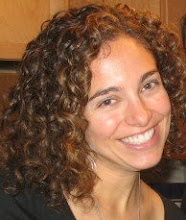I made a point to read the entire series before seeing the movie, lest my mental images be corrupted by someone else's casting and style decisions. I was glad I did, not only for this reason, but because the film is less tightly framed around Katniss's character development and emotional experience. And also, because it proves once again that Hollywood can take a subversive novel and turn it into eye candy.
It’s hard to resist looking at the parallels between
the alternate world of Panem and the reality we inhabit today. The
all-pervasive media, the competitive reality-television, the fabrication of
images through highly stylized fashion, interviews and back-story and the
obsession with power, money and material goods is something that one needn't look to fantasy literature or the movies to find. The concept of hunger, an issue worldwide and in this country as well (where 1 in 6 Americans is food insecure) is explored far more thoroughly in the books than onscreen, and while The Hunger Games movie is promoting the anti-hunger work of partnering agencies Feeding American and the World Food Programme, it doesn't make clear what the causes of hunger are (the organizations' sites and bonus materials do). The social inequities that keep the rich well-fed and the poor starving with government mandates of monoculture-type local economies was evenly conveyed in the books and could have provided a more interesting and compelling visual narrative. Instead, the movie succumbed to the very same tendency the book rails against by favoring style over substance, image over content.
The Hunger Games provides a great opportunity to engage audiences in a dialogue about media literacy. What is the veracity of images conveyed to us? Whose hidden agenda controls those images? What agency do we have as viewers to change the types of images we are fed and expose the power players who work to promote the status quo? It's a worthwhile exercise to ask young adults (or anyone, really) who read the book about their impressions of the film. What were some of the differences? What was left out of the film and why? Why were these choices made by the screenwriter/director/producer/studio and what can we learn about the role of media in shaping our social consciousness? Critical takes on popular works are some of the most potent and exciting way to take a mediocre work and elevate it to an important classic while promoting our engagement as active viewers. Watching The Hunger Games left me hungry for this type of discussion. It may not have started yet, but there's always the sequel...


